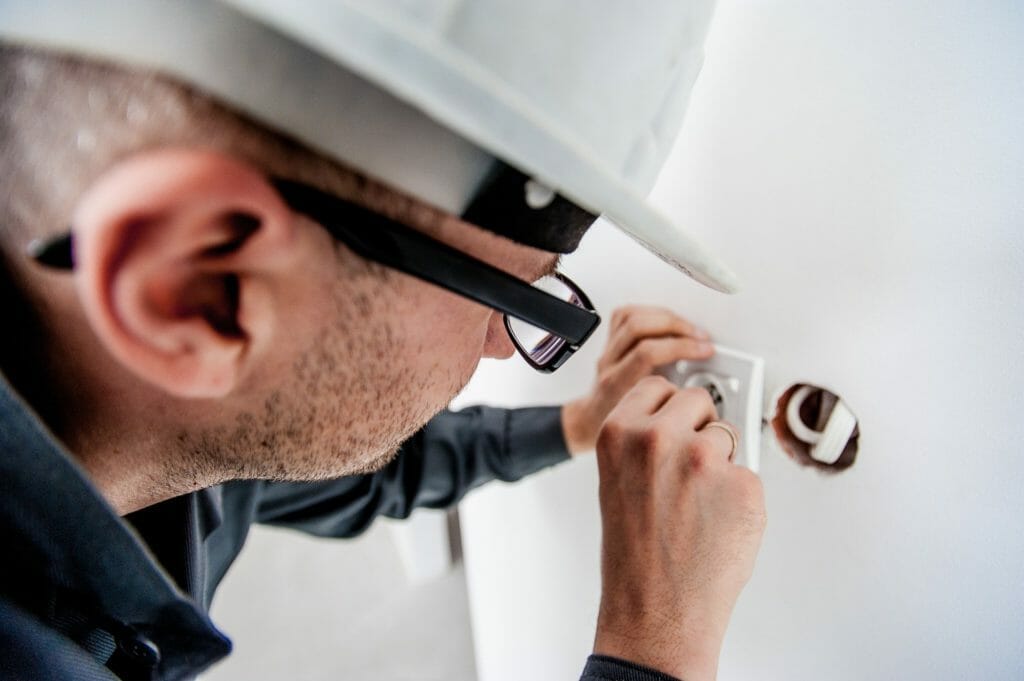Work orders are crucial to keeping track of work that must be completed in a condo or HOA. A work order helps associations and maintenance professionals keep track of what maintenance work is required, how long it should take, approximately how much the job will cost, and what materials are required to complete the job.
Work orders are like a reference point for all parties involved with the maintenance job. They keep everyone on the same page while minimizing unexpected expenses or delays. When done well, work orders allow property managers to resolve issues in a timely manner, and they can provide useful data that can be analyzed for future budgeting purposes.
Click here to download our work order template
Service requests, work orders, and purchase orders
Even though the terms are used interchangeably, there is a difference between service requests, work orders, and purchase orders.
Service request
A service request is a request submitted by an owner or resident. They may have a sink that is leaking, a broken washing machine or a dead lightbulb. If the owner is not responsible for paying to have these sorts of items fixed, then they can submit a service request to the HOA or condo. The property manager is responsible for making sure the service request is resolved in a timely manner.
Service requests come in all the time. Managing these requests can be one of the most overwhelming aspects of property management, which is why some property managers prefer using software to store, organize and respond to service requests.
Work order
Work orders are created by the property manager, or whoever is responsible for looking after repairs and maintenance. A property manager may have to get approval from the Board of Directors before submitting a work order.
Work orders may be created after a service request is approved, or it may be created because a scheduled repair needs to be taken care of. The work order captures all of the key information about the job in one document. Work orders can also be created and stored on a property management software system. It’s much easier to make changes and share updates using electronic documents.
Purchase order
Purchase orders are issued to establish a purchasing relationship with an external vendor or contractor. A condo or HOA might need to create a purchase order when they are bringing in a new contractor to take care of an uncommon repair. These orders specify items like the number of materials (if applicable), delivery schedule, and payment terms. They can also detail the frequency of service if the job will need to be done on a regular basis. Purchase orders may also require approval from the Board of Directors.
Although work orders and purchase orders sound similar, there are differences. A work order is started when a particular task must be completed. But a purchase order is created when an association is actually buying materials or services. It summarizes all of the details about the purchase to help ensure the association and supplier are in agreement about what is being purchased and how payment will be handled.
Some information from the purchase order will also be part of the work order.
What makes a good work order?
The difference between a good work order and a bad work order is the details. Property managers should aim to capture important details, including:
- Who the job is being done for
- Who is completing the job
- Where the job is being done
- Order number
- Who authorized the work order
- Who the job has been assigned to
- When the order was issued
- When approval was given
- Expected start date
- Expected end date
- Terms of service
- Description of maintenance job
- Hourly rate(s) for the job
- Materials required to complete the job
- Cost of materials
- Total cost
Not only do these details help mitigate potential issues or misunderstandings between maintenance professionals and associations, having accurate data means condos and HOAs can gain a clearer understanding of how much certain jobs should cost, how long they should take, and who does them best.
What triggers a work order?
Maintenance tasks can be categorized into two groups; planned maintenance and unplanned maintenance. Planned maintenance, such as routine inspections, enables property managers to create work orders at a predetermined time. Unplanned maintenance can be more challenging to manage. Some tasks may be urgent, while others don’t need to be addressed immediately. It’s up to the property manager to prioritize work orders.
The work order is assigned to a technician or maintenance professional once it has been created. Additional changes to the work order may be required before the technician completes the job. What was thought to be a small superficial issue may turn out to be a larger structural issue. If this happens, make sure that all parties are aware of the new information and price before allowing the technician to complete the job.
Making changes
Not every project goes as planned. When changes are required, updates should be documented in the original work order, including notes that explain the reason for the change. All parties should have access to the revised work order. They all need to agree with the new changes before the job is completed. Transparency and good communication are needed throughout the entire maintenance process.
Closing a work order
Once all of the terms of the work order are met, it can be closed. Property managers may need to sign off on the work order for compliance purposes. Once closed, the work order should be properly filed. An organized work order log is crucial for building asset histories, reviewing past solutions, preparing for audits, and budgeting.
The value of a work order
Work orders contain valuable information. They can provide insight into your processes and systems that can be used to increase efficiencies and minimize spending. Property managers can identify the most common elements that require repair in their community, and suggest things that can be done to decrease maintenance requests.
They can also use the information to identify preferred technicians and build lasting relationships with these companies or individuals. The cheapest option is not always the best option. Look for professionals who complete the job well, and within the price range and timeframe that they provided you.
Stay on top of maintenance
Don’t let maintenance requests or tasks accumulate. Your residents will be much happier if their community is taken care of, and your community will be worth more if it is properly maintained.
Good communication plays a significant role in the successful management of maintenance and work orders. Email is one way to handle maintenance issues, but checking and replying to dozens of emails every day isn’t an ideal approach. Instead, consider using an online system that has a feature capable of managing requests, work orders, and purchase orders.
Having a comprehensive system in place will save you time and streamline this tedious process, giving you the ability to attend to other responsibilities.
Conclusion
A well-maintained condo or HOA community is a happy community. Work orders can help property managers keep track of important maintenance work, collect key data, and ultimately make long-term improvements that will add to the value of the community.
Download Template
Download our free work order template



